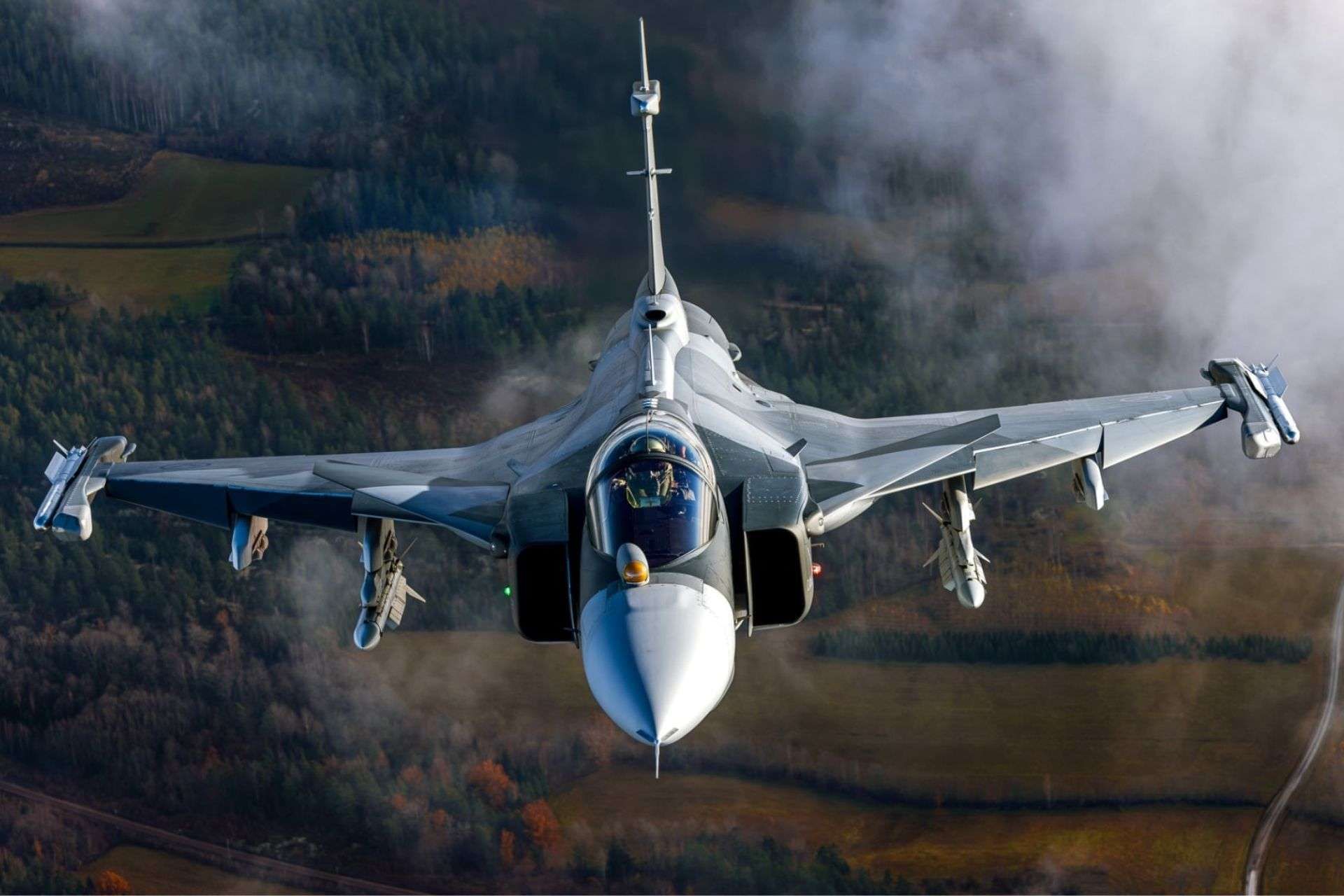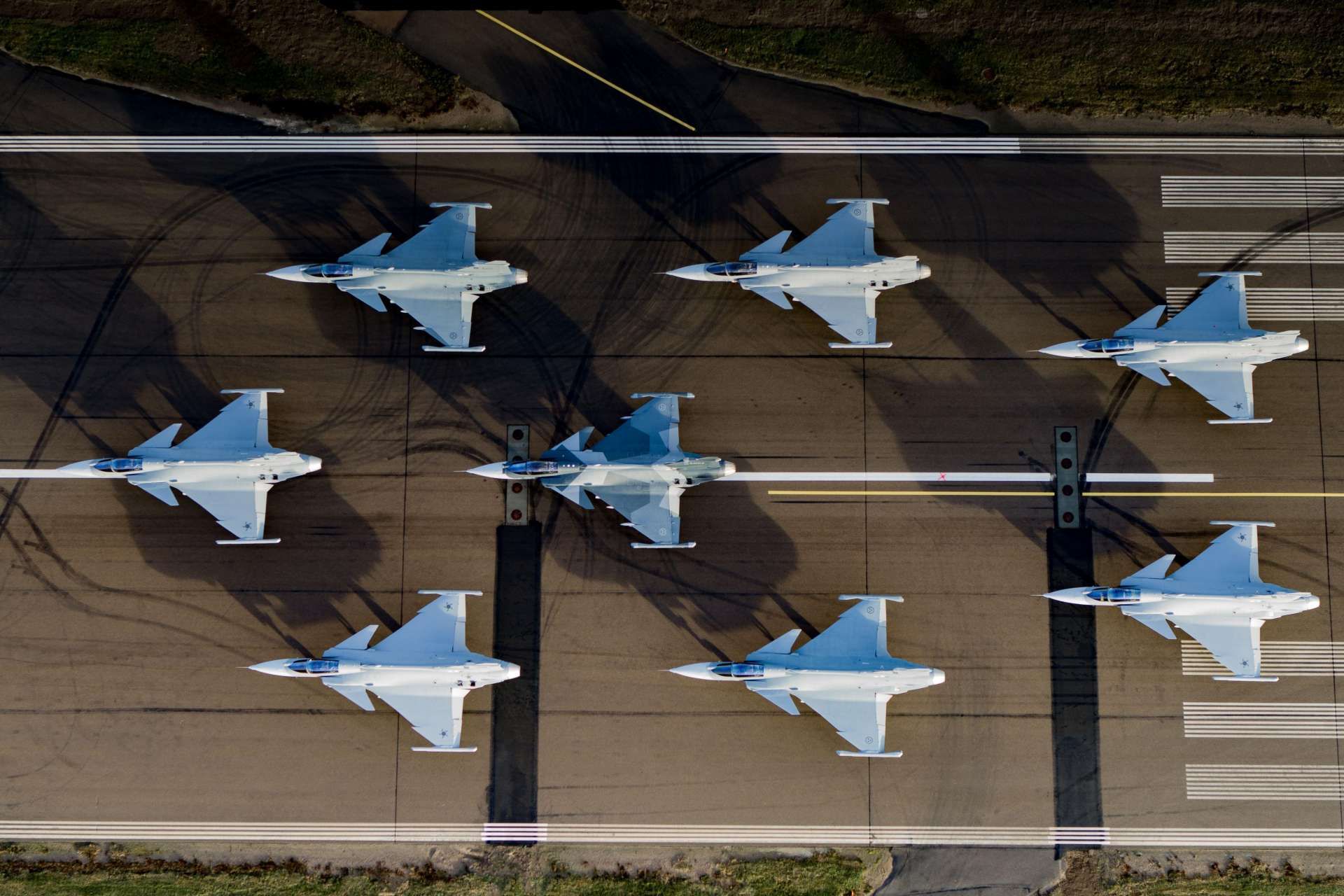Breaking news
Sweden Delays Delivery of Gripen Jets to Ukraine Amid Priority on F-16s.
In an interview with TT news agency on May 28, 2024, Swedish Defence Minister Pål Jonson indicated that several countries had asked Sweden to delay the planned delivery of Gripen fighter jets to Ukraine to prioritize the delivery of F-16s. This request comes as Ukraine awaits its first deliveries of F-16s from Western allies to counter Russia's air advantage.
Follow Army Recognition on Google News at this link

The Gripen is a modern, versatile fighter jet designed for easy maintenance and operational flexibility, capable of speeds over Mach 2 and altitudes up to 50,000 feet (Picture source: Saab)
Jonson stated that the delay is due to the focus on introducing the F-16s, as requested by other members of the air defense coalition. Belgium, the Netherlands, Denmark, and Norway have all promised to provide F-16s to Ukraine, with the first aircraft expected this year. Jonson emphasized that while the delivery of Gripen jets might become relevant in the future, the current priority is the implementation of the F-16 program.
In the autumn, reports suggested that the Swedish government was cautiously preparing for a potential transfer of Gripen jets to Ukraine. Following Sweden's final accession to NATO, the possibility of supplying Gripen jets to Ukraine remained on the table. During President Volodymyr Zelenskyy's visit to Sweden in August 2023, the provision of Gripen jets was discussed. However, Swedish officials have now decided to suspend the delivery to ensure the smooth progress of the F-16 deliveries.
The Gripen is a modern, versatile fighter jet designed for easy maintenance and operational flexibility, capable of speeds over Mach 2 and altitudes up to 50,000 feet. It can carry a range of weapons, including air-to-air missiles, air-to-ground munitions, and precision-guided bombs. The Gripen E, an advanced version of the jet, features improved avionics, enhanced electronic warfare capabilities, and superior interoperability with NATO systems.
The F-16, in service since the late 1970s, is a reliable and flexible multirole aircraft. It has undergone various upgrades, enhancing its radar, avionics, and weapon systems. The F-16 can also reach speeds over Mach 2 and operate at altitudes up to 50,000 feet, with a combat radius of about 340 miles. However, the F-16 is known for its maintenance challenges, requiring extensive training and setup for effective operation.
Ukraine hopes to integrate these jets into its air force promptly, though the necessary training suggests a challenging transition. Recently, Ukrainian pilots completed F-16 training programs in Arizona and the Netherlands, preparing them for the forthcoming deliveries.
Regardless, Sweden is not ready to deliver Gripen fighter jets to Ukraine for several reasons. First, it is necessary to train Ukrainian pilots to operate these aircraft, a process that takes time and resources. As demonstrated with the F-16s, pilot training can take between six and eight months. This learning period is crucial to ensure that pilots can fully master the advanced systems and capabilities of the Gripen, inevitably delaying the delivery and integration of these jets into the Ukrainian armed forces.
Furthermore, unlike the F-16, few countries possess the Gripen, limiting Sweden's ability to provide these aircraft without affecting its own stocks. Sweden must maintain a sufficient level of defense, especially given its geographical proximity to Russia, which prevents it from significantly reducing its air forces. Consequently, Sweden cannot afford to send a substantial number of Gripen jets to Ukraine without compromising its own security and defense capability. This situation further complicates the possibility of a rapid and large-scale transfer of these aircraft to Ukraine.

Sweden cannot afford to send a substantial number of Gripen jets to Ukraine without compromising its own security and defense capability (Picture source: Saab)


























